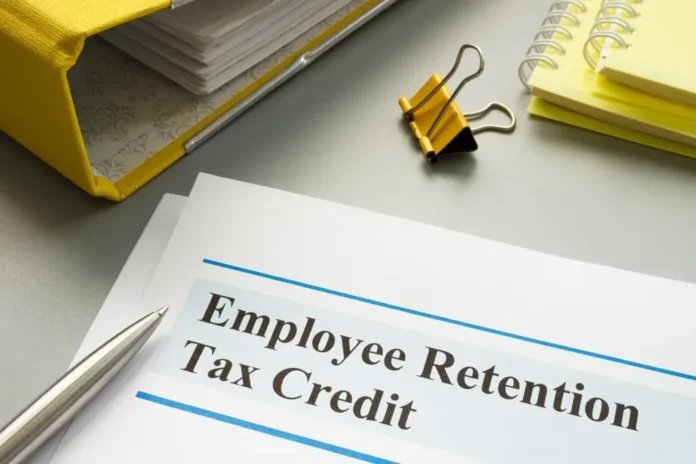
During the 2009 COVID-19 outbreak, the United States government established a critical tool to aid businesses financially: the Employee Retention Credit (ERC). The purpose of the ERC is to provide incentives for companies to continue paying their employees notwithstanding the impact of the pandemic on their bottom lines. Since its inception, the ERC has disbursed billions in aid to qualifying businesses, thereby protecting millions of jobs from elimination.
Many, however, are beginning to question what the future holds for the ERC as the COVID-19 pandemic begins to wind down and the economy continues to recover. When the economy recovers from the pandemic, will it still be useful, or will it be phased out? In this article, we’ll take a look at the ERC as it stands now and where it might be headed in light of recent legislative and regulatory changes, as well as economic and labor market trends. By looking into the future of the ERC, we can get a sense of how this crucial measure may develop and what effects it may have on businesses and workers.
Status of the ERC at Present

During March of 2020, the ERC was included in the Coronavirus Aid, Relief, and Economic Security (CARES) Act. Since then, it has undergone a number of revisions and modifications as Congress and the Internal Revenue Service work to improve and broaden the credit’s scope in order to better assist businesses throughout the pandemic.
At the moment, the ERC is open to businesses whose revenue fell or was temporarily halted because of COVID-19-related government orders. Through the end of 2021, each employee can receive a $28,000 credit, or 70% of their eligible wages up to $10,000 per quarter.
The ERC has been renewed and enlarged thanks not just to the CARES Act but also to the Consolidated Appropriations Act (CAA) and the American Rescue Plan Act (ARPA). For instance, the ERC was extended by the CAA until June 30, 2021, and by the ARPA until December 31, 2021. The maximum credit amount was also enhanced by the ARPA, and the credit was made available to other types of employers.
The current state of the ERC is indicative of a measure that has been revised and improved upon on multiple occasions over the past year to meet the changing requirements of businesses across the pandemic. But the ERC’s future is still unknown, as it is not known if it will stay relevant post-pandemic or if it will undergo more revisions and updates. In the following section, we will discuss the many directions the ERC could go after COVID-19.
Prospects for the ERC Following COVID-19

Many are wondering what lies ahead for the ERC as the COVID-19 outbreak winds down and the economy continues to improve. The ERC’s future is uncertain and depends on a number of circumstances, all of which must be taken into account.
As the economy recovers, it is possible that the ERC will be gradually phased away. If this happened, qualifying businesses wouldn’t be able to take advantage of the credit and would instead need to look into other forms of financial aid like loans and tax breaks.
There are, however, many who argue the ERC should carry on after the pandemic has ended. To give just one example, the ERC may provide much-needed financial support to firms who are still battling to recover from the economic repercussions of the pandemic. In addition, certain businesses may experience disruptions in operations due to persistent public health concerns, making the ERC essential.
Alterations to or an extension of the ERC are other possible results. For instance, Congress might decide to raise the maximum credit or open up eligibility to additional types of enterprises. As an alternative, the IRS might provide more detailed instructions for claiming the credit or streamline the application process for firms.
The ERC’s trajectory beyond COVID-19 will be determined by a number of factors, including the state of the economy, new legislation and regulations, and the state of public health. The ERC has been an effective tool for helping businesses weather the pandemic, and its effects on both firms and workers will last for years to come. Other potential influences on the ERC’s future will be discussed in the following section.
Potentially Harmful External Factors to the ERC
The existing and projected development of the ERC are significant elements to examine, but they aren’t the only ones. Changes in law and regulation, as well as shifts in the economy and the job market, fall under this category.
The future of the ERC may depend heavily on changes in legislation and regulation. Changes to the credit’s parameters, such as those brought about by new law or by regulations issued by the Internal Revenue Service, are possible. Companies should monitor this space closely because changes in the law or policy could significantly affect their eligibility to receive the ERC.
The state of the economy and the job market are also major considerations. There may be less need for the ERC if, for instance, the economy maintains its recovery and unemployment rates continue to fall. On the other hand, the ERC may remain an essential mechanism for helping enterprises if there are persistent disruptions to corporate operations or major economic issues.
The effects of any modifications to the ERC on businesses and workers should also be taken into account. Businesses that rely on the credit to operate could be negatively affected if, for instance, the credit were to be phased out or adjusted in a way that made it less generous. Similarly, alterations to the ERC may have repercussions for workers in the form of lost employment opportunities or lower pay.
Although the present and future of the ERC are crucial variables to think about, it is also crucial to keep an eye on other issues that may have an impact on the credit in the years to come. The ERC is likely to change over time, so it’s important for businesses to keep up with legislative and regulatory changes, economic and labor market trends, and their possible influence on employers and employees.

Conclusion
An effective approach for helping firms cope with the COVID-19 pandemic has been the Employee Retention Credit (ERC). The credit has been around since 2020, and despite various revisions and improvements, it continues to be a valuable financial resource for qualifying businesses.
The future of the ERC is unclear as the pandemic winds down and the economy continues to recover. There are valid arguments on both sides, and the future of the credit will rely on a number of issues such as legislative and regulatory changes, the state of the economy and the job market, and the state of public health.
Regardless of the conclusion, businesses should monitor the ERC closely because any changes to the credit might have far-reaching consequences for their operations and their staff. Businesses can benefit from keeping an eye on these changes and learning how they can affect the ERC in order to better plan for the future and ensure they have the resources they need to face any potential obstacles.








